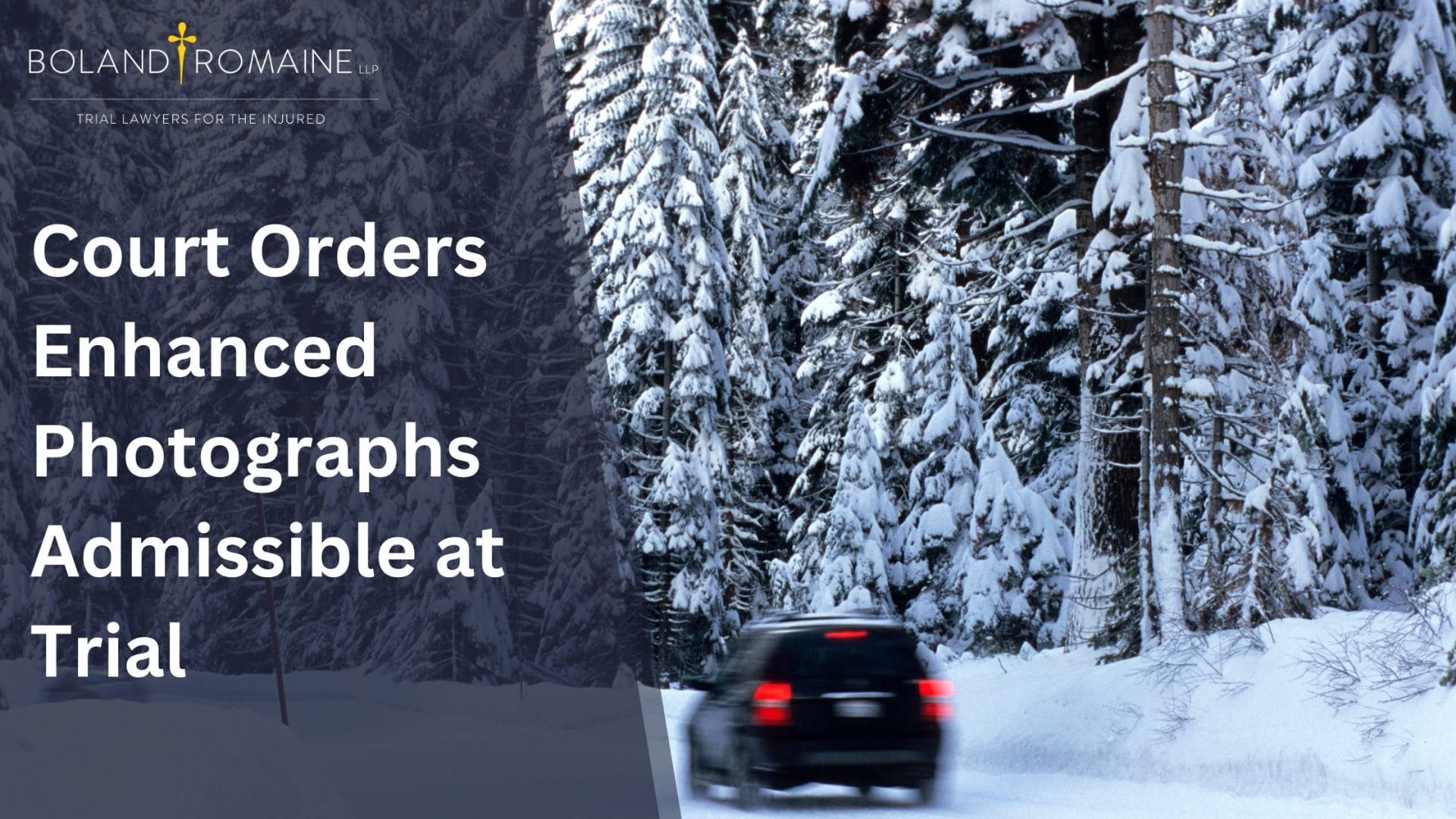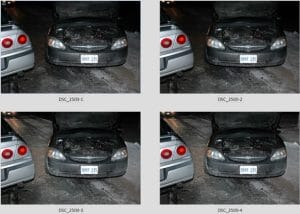Court Orders Enhanced Photographs Admissible at Trial
- 21.11.2024
- Insights

In the first Ontario decision addressing the admissibility of enhanced photographs in a civil context, Justice Annette Casullo issued a pre-trial ruling admitting into evidence police photographs of an accident scene later enhanced by an expert forensic photographer.
In Wasylyk v Simcoe County, the plaintiff suffered catastrophic injuries after her vehicle lost control on a class 1 roadway, crossed the center-line, and struck oncoming traffic. She commenced a claim against Simcoe County, the road authority responsible for maintaining the roadway. As the parties agreed on damages at $16,000,000, the trial proceeded on liability only.
The extent of compressed snow and ice along the stretch of roadway where the accident occurred was contested. To support her claim that icy conditions led to her losing control of her vehicle, the plaintiff sought to tender enhanced versions of photographs originally taken at the scene of the accident by investigating police officers. As the original police photographs were taken in the middle of the night, significant portions of the roadway, captured in the background, appeared black to the camera and therefore did not show the condition of the road. To address this, the plaintiff retained a certified forensic photographer (Ret. First Lieutenant D. Eric Johnson) to enhance the police photographs to clarify the content in the dark areas within guidelines set out by the Scientific Workgroup on Imaging Technologies (“SWGIT”). For each photograph that was enhanced, Mr. Johnson followed the same four-step procedure:
- Step 1: depicts the original photograph
- Step 2: depicts the original image with noise reduction and sharpening
- Step 3: depicts a sharper image from Step 2 with shadow areas brightened as much as possible without amplifying noise.
- Step 4: the process of non-linear brightening was applied to the darkest areas within each image to reveal additional detail.
An example of the effect of the four-step enhancement process can be found below:

The defendant opposed the admissibility of the enhanced photographs and relied upon a report from its own certified forensic video analyst (Eric Plaxton).
In reaching her decision to admit the enhanced photographs, Justice Casullo relied on the Supreme Court of Canada decision of R v Nikolovksi (1996 CanLII 158 (SCC)), in which the Court upheld the admissibility of video camera footage into evidence, despite such video footage being the only evidence the trial judge relied upon to convict the accused of robbery.
Her Honour also considered the most recent case of R v Andalib-Goortani (2014 ONSC 4690), in which Justice Trotter (before His Honour’s elevation to the Ontario Court of Appeal), set out the following principles upon which the admissibility of photographs, videos, and other visual evidence should be governed:
- Proof that the visual evidence is accurate, and truly representing the facts;
- That the visual evidence be fair, and not contain any intention to mislead; and
- That the visual evidence be verified under oath by a witness capable of doing so.
Justice Casullo concluded that the principles favoured admitting the enhanced photographs into evidence:
[15]...We know the identity of the photographer. We know that the photographs have been enhanced. We know that nothing has been added to the photographs. The content brought into focus by the enhancement process was already in the picture - the enhancements have revealed the detail which was captured by the camera’s sensor. According to Mr. Johnson, the original photographs were simply underexposed.
[17] Mr. Johnson’s mandate was not to make the road surface more visible, nor was it to identify objects or the condition of the road surface. Indeed, Mr. Plaxton concedes that Mr. Johnson achieved the “stated purpose of clarifying the content in the dark areas of the images.” In Mr. Plaxton’s opinion, Mr. Johnson did this without obscuring details in other areas, including the highlights.
After concluding that admission of the enhanced photographs would not prejudice the defendants, Justice Casullo granted the plaintiff’s motion.
Click here to read the full pre-trial ruling.




